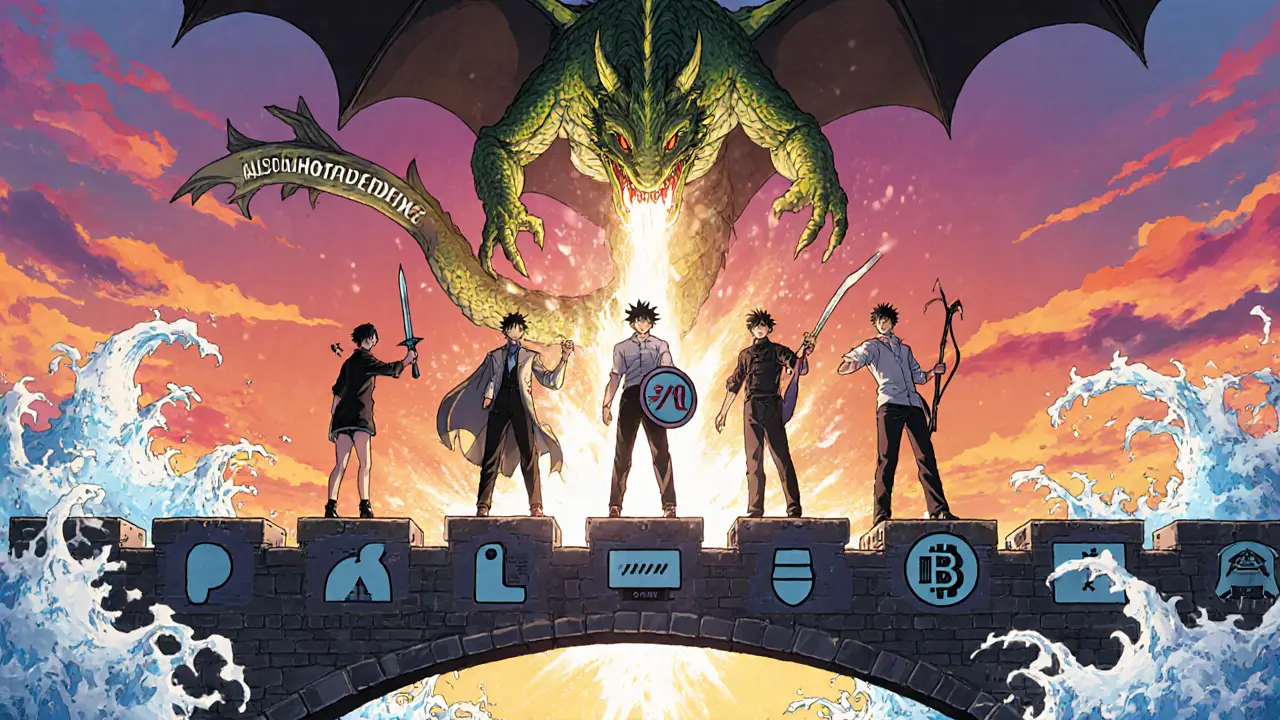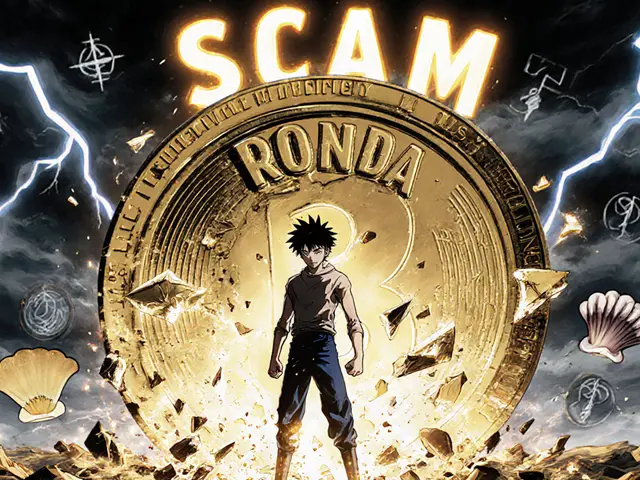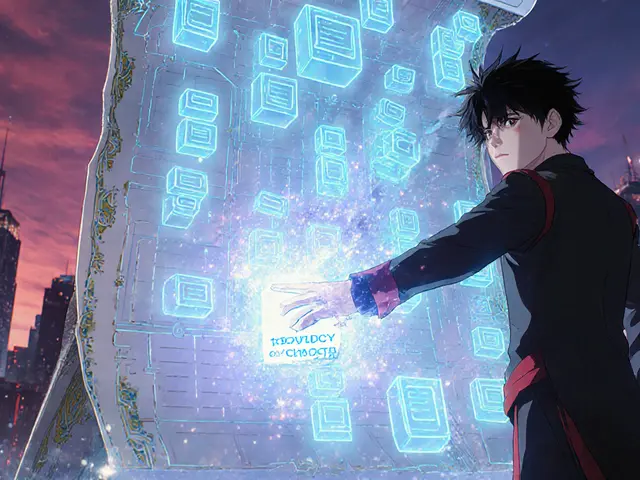Monetization Stream Calculator
Your Audience
Projected Monthly Income
Calculate your potential earnings
Most creators think monetization means waiting for YouTube or TikTok to pay them. But if you’re only relying on platform ads, you’re playing a game you can’t win. In 2024, over 70% of creators earned less than $500 a year - not because they weren’t working hard, but because they trusted algorithms over their own audience. The truth? Monetization isn’t about going viral. It’s about building something that lasts.
Stop Chasing Views, Start Building Relationships
Platforms change rules overnight. YouTube cut RPMs by 22% in Q2 2024 for creators who relied solely on ads. Instagram removed Reels bonuses for creators under 10K followers. TikTok tweaked its payout formula again in March 2025. These aren’t mistakes - they’re business decisions. Platforms don’t owe you anything. Your audience does. The most successful creators don’t wait for platforms to pay them. They build direct relationships. They collect emails. They host Discord servers. They sell digital products. They turn followers into customers. One Reddit creator, u/CodingWithChris, made $42,000 in 30 days selling a $49 Python course - not because he had a million subscribers, but because he had 5,000 people who trusted him enough to buy.Ad Revenue Isn’t Dead - But It’s Not Enough
YouTube’s Partner Program still pays. But the bar is higher than ever: 1,000 subscribers and 4,000 watch hours in the past year. And even then, your earnings depend on your niche. A tech reviewer might make $12 per 1,000 views. A gaming creator might get $3. The average RPM? Around $5. That’s not enough to live on unless you’re posting daily and hitting millions of views. And don’t forget: YouTube takes 45% of ad revenue. You’re not earning $12 - you’re earning $6.60 after the platform takes its cut. Plus, your income spikes and crashes with algorithm updates. In 2024, creators using only ads saw their monthly earnings swing by 30-60% from month to month. Ad revenue is a side dish, not the main course. Use it to fund your real business - the one you own.Sponsorships: Pay Me, Not My Algorithm
Sponsorships pay better than ads - if you do them right. Nano-influencers (1K-10K followers) charge $10-$100 per post. Micro-influencers (10K-100K) average $100-$500. Mid-tier creators (100K-500K) can land $500-$5,000. Top-tier creators? $5,000-$25,000+ per post. But here’s the catch: brands don’t care about your follower count. They care about your engagement rate. A creator with 20K followers and a 7% engagement rate will earn more than someone with 200K followers and 1% engagement. Why? Because real people are buying. Instagram is still the top platform for sponsorships - 68% of marketers use it. But TikTok and YouTube Shorts are catching up fast. The key? Be selective. Only work with brands that fit your content. If you make vegan recipes and get a sponsorship from a fast-food chain, your audience will smell the inauthenticity. And they’ll walk away.Subscriptions: The Most Reliable Income Stream
Patreon, MemberSpace, Substack - these aren’t just tools. They’re lifelines. Subscriptions turn casual viewers into paying members. The average subscriber pays $5-$50 per month. Successful creators convert 5-15% of their free audience into paid members. One creator on Reddit, u/DesignGuru92, earns $8,200 a month from a $15/month Figma course on Patreon. How? She didn’t just post videos. She offered weekly Q&As, downloadable templates, and early access to tutorials. Her audience didn’t pay for content. They paid for belonging. Platforms take a cut. Patreon charges 5-12% plus payment fees. But the trade-off is worth it. You get predictable income. You own the relationship. And you don’t have to beg for ad deals every month.Digital Products: The Ultimate Scalable Asset
A course, an eBook, a template pack - these are assets you create once and sell forever. Margins? 70-95%. That’s better than any physical product. Teachable, Gumroad, and Kajabi make it easy. Teachable charges 5% per sale plus $29-$249/month. You can build a full course in a weekend. The real work? Marketing it. u/CodingWithChris didn’t just upload his Python course. He sent targeted emails to his 5,000-subscriber list. He posted case studies: “How I went from $0 to $10K in 30 days.” He shared student results. He didn’t sell a course. He sold a transformation. The market is crowded - 400 billion in global e-learning revenue in 2024. But if you solve a real problem for a specific group, you’ll stand out. Don’t make a “Beginner’s Guide to Everything.” Make a “Figma Guide for Freelancers Who Want to Charge $100/Hour.” Specificity wins.Merch and Physical Products: High Risk, High Reward
T-shirts, mugs, posters - they feel like a natural extension of your brand. But they’re also a trap for most creators. You need upfront cash for inventory. You need to manage shipping. You need to deal with returns. And if no one buys? You’re stuck with boxes of unsold stuff. u/ArtByMaya lost $1,200 on print-on-demand art prints because she guessed the demand. If you want to sell merch, start small. Use Fourthwall or Printful - they handle printing and shipping. Test one design. Run a 7-day pre-order. See if 50 people buy it. If yes, scale. If no, pivot. Don’t order 500 t-shirts on hope.Affiliate Marketing: Earn When They Buy
Affiliate links are low-effort, high-reward if used correctly. Amazon pays 1-10% per sale. But niche programs pay better. ConvertKit gives 30% recurring commissions. Notion gives 20% for lifetime referrals. Even software like Canva pays 30% on annual plans. The trick? Only promote tools you actually use. If you’re a video editor, link to your favorite editing plugin. If you’re a writer, recommend your grammar tool. Your audience trusts you - use that trust to recommend real solutions.
Blockchain and Web3: The New Frontier
This is where things get interesting. Blockchain isn’t just about crypto. It’s about ownership. Platforms like Rally and SuperRare let creators issue tokens tied to their content. Fans buy tokens to support you, get early access, or even vote on future projects. In 2024, Rally processed $12.7 million in creator payments. One musician issued 10,000 tokens for her album. Fans bought them for $5 each. She raised $50,000 upfront. In return, token holders got exclusive mixes, backstage access, and a share of future merch sales. This isn’t for everyone. It requires technical understanding. But for creators with loyal, tech-savvy audiences, it’s a powerful alternative to traditional platforms. You’re not asking fans to buy a product. You’re inviting them to co-own your journey.The 4-Stream Rule: Don’t Put All Your Eggs in One Platform
Dr. Sarah Roberts from UCLA says it best: “No single revenue stream should make up more than 40% of your income.” Look at u/TravelWithTina. She makes $12,000 a month from four streams: TikTok sponsorships ($5K), Patreon ($4K), affiliate links ($2K), and digital travel maps ($1K). If TikTok changes its algorithm tomorrow, she still makes $7K. That’s resilience. The creators who survive are the ones who diversify. One stream for ads. One for subscriptions. One for digital products. One for affiliate or blockchain. Four streams. That’s the minimum.Start Small. Build Slow. Own It.
You don’t need a million followers. You need 1,000 true fans. Gary Vaynerchuk’s advice still holds: monetize at 1,000, not 10,000. Pick one monetization method. Start with subscriptions or a digital product. Build it for your most engaged 100 followers. Get feedback. Improve. Then expand. Track your metrics: email open rates, conversion rates, customer lifetime value. Don’t just count views. Count buyers. And most importantly - stop waiting for permission. Platforms will always change. Your audience won’t. Build your business around them.What’s the fastest way for a new creator to start making money?
The fastest path is selling a low-cost digital product - like a $10 template, checklist, or guide - to your existing audience. Use Gumroad or Ko-fi to set it up in under an hour. No inventory. No shipping. Just share it with your email list or Discord. If even 10 people buy it, you’ve made $100. That’s proof your content has value.
Do I need to use blockchain to monetize successfully?
No. Blockchain is an option, not a requirement. Most creators make sustainable income using traditional methods like subscriptions, digital products, and sponsorships. Blockchain works best for creators with highly engaged, tech-savvy audiences who want to invest in your growth. If you’re just starting out, focus on email lists and direct sales first.
How long does it take to start earning from monetization?
Most creators see meaningful income after 3-6 months of consistent effort. The first month is setup: choosing a platform, creating your first product, setting up payment processing. Months 2-3 are testing: sharing with your audience, getting feedback, adjusting. By month 4-6, you’ll start seeing repeat buyers and referrals. Patience beats speed here.
What’s the biggest mistake creators make with monetization?
Waiting until they have “enough” followers to start. Monetization isn’t a reward for popularity - it’s a tool to build loyalty. The creators who start early, even with 50 followers, learn what their audience values. Those who wait until they hit 10K often find their audience has moved on, and their monetization feels forced.
Should I use multiple platforms for monetization?
Yes - but not for the same thing. Use YouTube or TikTok to grow your audience. Use Patreon or Substack to convert them into paying members. Use Gumroad to sell digital products. Use email to keep them engaged. Don’t spread yourself thin across ten platforms. Focus on one growth platform and one monetization platform - then expand slowly.
If you’re serious about making money from your content, stop looking for hacks. Start building systems. Own your audience. Offer real value. And never forget: the people who support you aren’t viewers. They’re customers. Treat them that way.









Comments (25)
Mike Calwell
November 18, 2025 AT 05:01 AMbro just sell merch and chill
nikhil .m445
November 19, 2025 AT 11:56 AMIt is imperative to understand that algorithmic dependency is a form of economic servitude. One must cultivate direct monetization channels to avoid the tyranny of corporate platforms. This is not merely advice-it is a philosophical imperative for digital autonomy.
Rick Mendoza
November 20, 2025 AT 05:25 AMAd revenue is dead long live direct sales
Aryan Juned
November 21, 2025 AT 13:37 PMYOOO this is so true 😭 I was just posting reels for 2 years and made $120… then I sold a $15 Canva template to my 300 followers and made $1500 in a week 💸🔥
Sean Pollock
November 22, 2025 AT 20:09 PMyou think this is new? people have been selling digital products since the 90s. the real problem is creators who think theyre special because they use gumroad. also why do you keep saying 'trust' like its a currency. its not. its just attention economy with extra steps
Student Teacher
November 24, 2025 AT 13:53 PMI’ve been teaching middle schoolers how to build simple Notion templates and they’re making $20–$50 a week. It’s wild to see how empowered they feel when they realize their skills have value beyond likes.
Ninad Mulay
November 25, 2025 AT 19:02 PMMan in India we got chai and dreams, but the real hustle? Selling PDFs to Americans who think they need a 'Figma Pro Guide'. I made $800 last month just from one template. No ads, no followers, just WhatsApp and a Google Form. The world’s weird, but it pays.
Jay Davies
November 27, 2025 AT 13:30 PMThe notion that ad revenue is 'not enough' is statistically accurate, yet the article overlooks the fact that for 90% of creators, even achieving the threshold for monetization is a monumental task. The advice is sound, but it assumes a baseline of audience size and technical literacy that is simply not universal.
Grace Craig
November 28, 2025 AT 14:00 PMOne must recognize that the commodification of creative labor under platform capitalism necessitates a reorientation toward sovereign economic models. The digital product, as an immutable asset, constitutes the only legitimate form of value retention in an era of ephemeral algorithmic governance.
Ryan Hansen
November 30, 2025 AT 08:40 AMI’ve been doing this for five years now. Started with a $7 Notion template for students, sold 12 copies. Then I made a $25 checklist for indie freelancers, sold 400 in six months. Then I started offering monthly coaching calls at $100. Now I make more from three people who pay me $500/month than I ever did from YouTube ads. The key isn’t virality-it’s consistency and specificity. I didn’t target ‘everyone who uses Canva.’ I targeted ‘freelance designers who hate client feedback loops.’ That’s who bought. And they kept coming back.
Derayne Stegall
November 30, 2025 AT 17:49 PMYESSSS this is the energy I needed 💪🔥 Stop waiting for the algorithm to love you-go make your own damn love language! I sold 200 $12 digital stickers in 48 hours. No ads. Just my DMs. You got a skill? Package it. Sell it. Done. 🚀
Astor Digital
December 1, 2025 AT 14:02 PMMy cousin in Lagos sells custom Instagram story templates to Nigerian small business owners. She doesn’t even have a website. Just WhatsApp and a Google Drive. Made $3k last month. The internet’s global, but the real money’s in hyper-local solutions.
Aayansh Singh
December 1, 2025 AT 18:19 PMEveryone here is acting like this is some groundbreaking insight. You think you’re the first person to sell a $49 course? The real scam is this article pretending that creators are victims of platforms. No. They’re lazy. They don’t know how to write a sales page. They don’t know how to email. They think ‘build an audience’ means posting on TikTok. Wake up. The tools have been free for a decade.
Darren Jones
December 2, 2025 AT 19:06 PMFor anyone starting out: pick ONE method. Not five. Just one. Start with email. Collect 100 emails. Send them one valuable thing every week. After 8 weeks, offer a $10 guide. If 5 people buy, you’ve made $50. That’s your proof. Then repeat. Don’t chase trends. Build trust. It’s boring. It works.
jesani amit
December 3, 2025 AT 13:30 PMBro I was broke last year, slept on my friend’s floor. Made a $10 PDF on 'How to Fix Your Bad Sleep Routine'-used my own story. Posted it on Reddit, sent it to 200 people on Instagram DMs. Made $1,200 in 10 days. Now I’ve got three products. No ads. No sponsors. Just me and my people. You don’t need a million followers. You just need 100 who care enough to pay.
Peter Rossiter
December 3, 2025 AT 13:37 PMad revenue is dead
Mike Gransky
December 4, 2025 AT 07:04 AMIf you're reading this and feeling overwhelmed, start today. Open Gumroad. Make one thing. Price it at $5. Send it to your five closest followers. Ask for feedback. That’s it. You don’t need to be perfect. You just need to begin. And you’re not behind-you’re right on time.
Ella Davies
December 6, 2025 AT 05:54 AMI tested this with my art community. Offered a free downloadable brush pack. Collected 800 emails. Three weeks later, sold a $15 color palette guide. 117 sales. Profit: $1,500. The key wasn’t the product-it was the relationship. People paid because they knew I’d answered their questions in the comments for months.
Shanell Nelly
December 7, 2025 AT 22:43 PMJust had a 17-year-old student tell me she made $600 selling Canva resume templates to college applicants. She didn’t even know what 'monetization' meant. She just saw a need and solved it. That’s the real lesson here: solve a tiny problem for a specific person. Over and over. That’s how you build a business.
Nathan Ross
December 8, 2025 AT 13:49 PMthe real truth is no one cares about your content unless you give them a reason to pay. platforms are just the stage. the audience is the customer. stop acting like the algorithm is your boss. you’re the CEO of you. act like it.
garrett goggin
December 10, 2025 AT 05:54 AMobviously the deep state is controlling the algorithms so they can keep creators poor. did you know that in 2023, 78% of ad revenue went to 3 companies? and they’re all owned by the same family that also owns the FDA? the real scam? they want you dependent. stop buying into the lie. go crypto. buy my token. i’m selling 1000 at $0.50. first 100 get a free 10-hour course on how to escape the matrix.
Bill Henry
December 12, 2025 AT 01:21 AMjust started selling my $12 pdf on how to write better emails and already got 30 sales. crazy how simple it is when you stop overthinking it
Jess Zafarris
December 13, 2025 AT 04:01 AMso you’re telling me the secret to making money is… being a businessperson? shocking. next you’ll tell me water is wet and gravity exists. this article reads like a LinkedIn post written by a 20-year-old who just discovered Gumroad.
Lori Holton
December 13, 2025 AT 08:18 AMOf course, the article neglects to mention that the entire creator economy is a meticulously engineered psychological trap designed to extract labor from the proletariat under the illusion of autonomy. The subscription model? A neoliberal rebranding of indentured servitude. The digital product? A commodity fetish designed to mask the erosion of real wages. You are not a brand. You are a data point.
Bruce Murray
December 15, 2025 AT 00:17 AMThis hit me hard. I spent two years chasing views. Last month, I launched a $15 checklist for new teachers. Sold 47 copies. Made more than I did in ads all year. I didn’t need to go viral. I just needed to help one person. Turns out, that’s enough.